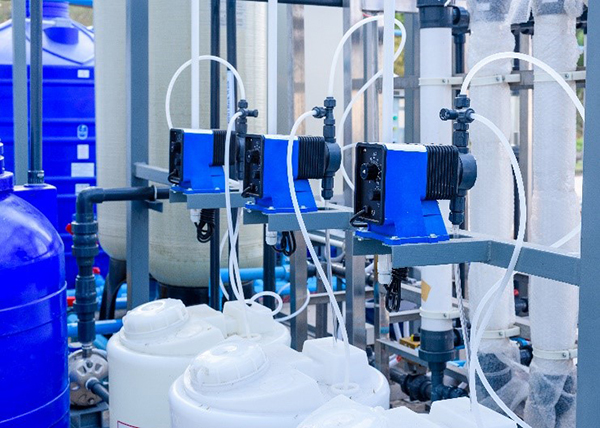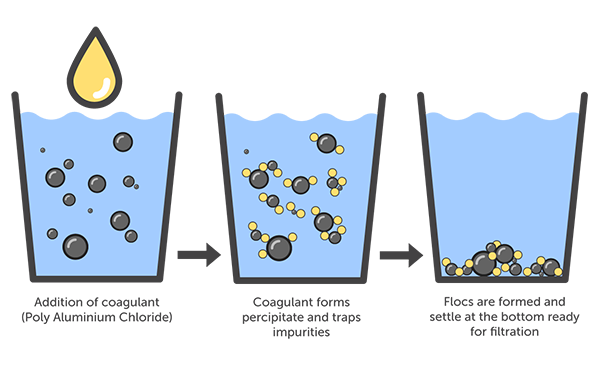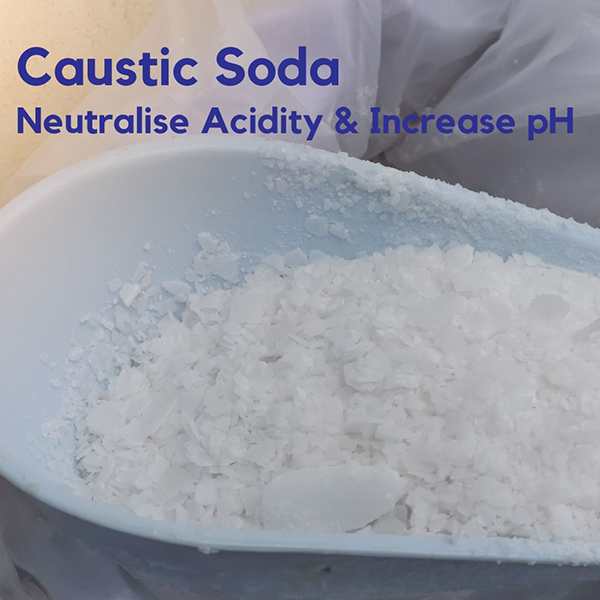Chemical Dosing Systems
Effective water and wastewater treatment is essential for safeguarding public health and protecting the environment. At the heart of this process are chemical dosing systems, which play a critical role in ensuring that water and wastewater are treated to the highest standards before being discharged or reused. Wastewater treatment requires various chemical dosing systems to manage the complex processes involved in treating water to safe and environmentally compliant standards. Each system is designed to handle specific chemicals and dosing requirements, ensuring that treatment plants operate efficiently and effectively. Here is a detailed overview of the different types of chemical dosing systems that we offer in water and wastewater treatment:
Lime Dosing Systems
Lime dosing systems are an essential component of chemical dosing systems in various industrial and municipal wastewater treatment processes. These systems are primarily used to control the pH levels of wastewater, stabilise sludge, and remove impurities, such as phosphorus and heavy metals. Lime, in the form of quicklime (calcium oxide) or hydrated lime (calcium hydroxide), is a cost-effective chemical whitin the chemical dosing systems that reacts with acidic components in wastewater, resulting in a neutralised pH and the formation of insoluble compounds that can be easily removed.
The system typically consists of a lime storage silo, a dosing unit, and a mixing mechanism. Lime is mixed with water to create a slurry, which is carefully metered into the water stream. The system continuously monitors the pH levels and adjusts the lime dosing rate to maintain the desired pH balance, ensuring effective treatment and minimal environmental impact.
Key Applications:
- pH Control: Adjusts wastewater pH for effective treatment.
- Sludge Stabilization: Reduces pathogens and odors in sludge.
- Phosphorus Removal: Prevents water pollution.
- Heavy Metal Precipitation: Lowers heavy metal concentrations.
- Water Softening: Removes hardness-causing ions.


Polymer Dosing Systems
Polymer dosing systems play a crucial role in the chemical dosing systems within the wastewater treatment process, particularly in enhancing the efficiency of solid-liquid separation. Polymers, often called coagulants or flocculants, aggregate fine particles and colloids into larger flocs, making it easier to remove them through sedimentation, flotation, or filtration. These systems are essential components of chemical dosing systems for processes such as sludge dewatering, water clarification, and chemical conditioning, ensuring that wastewater is treated effectively and meets regulatory standards.
The system usually includes a storage tank, a dosing pump, and a mixing unit. Dry or liquid polymer is mixed with water to create a homogenous solution. The dosing pump then precisely injects this solution into the treatment process, ensuring optimal dosage for effective treatment while minimising waste and operational costs.
Key Applications:
- Coagulation and Flocculation: Aggregates suspended particles for easier removal, reducing water turbidity.
- Sludge Dewatering: Improves sludge dewaterability, reducing volume for easier handling and disposal.
- Thickening: Concentrates sludge before further treatment, lowering treatment and disposal costs.
- Filtration: Enhances removal of suspended solids and extends filter life.
Chlorine Dosing Systems
Chlorine dosing systems are widely used as part of chemical dosing systems in both water and wastewater treatment processes to disinfect water, control biological growth, and remove unwanted odours and tastes. Chlorine is a powerful oxidising agent that effectively kills bacteria, viruses, and other pathogens, ensuring water is safe for consumption and environmental discharge. As a key component of chemical dosing systems, chlorine dosing systems are critical in maintaining water quality and meeting stringent regulatory standards for public health and environmental protection.
The system typically includes a storage tank for chlorine, a dosing pump, and a control unit. Chlorine is measured and injected into the water flow at controlled rates in either liquid or gas form. Chlorine analysers (amperometric sensors), pH meters, and ORP sensors (oxidation-reduction potential) monitor the chlorine concentration and the pH levels in real time. Temperature sensors (TT) are also used to account for temperature variations, as both pH and temperature can significantly affect the efficacy of chlorine disinfection. The control unit adjusts the dosing based on the readings from these sensors to maintain effective disinfection while preventing over-chlorination, ensuring the treated water meets safety standards.
Key Applications:
- Disinfection: Inactivates pathogens in drinking and process water.
- Odor and Taste Control: Removes unpleasant smells and tastes.
- Algae and Biofilm Control: Prevents growth in water systems and cooling towers.
- Oxidation: Converts iron, manganese, and sulphides into filterable forms.


Ferric Chloride and Alum/PAC Dosing Systems
Ferric chloride and alum/PAC (aluminium sulphate/poly aluminium chloride) are widely used coagulants in chemical dosing systems in water and wastewater treatment processes. These chemicals are critical for removing suspended solids, reducing turbidity, and eliminating contaminants such as phosphorus and heavy metals. As part of effective chemical dosing systems, ferric chloride and alum dosing systems are designed to deliver precise amounts of these coagulants into the water or wastewater stream, optimising the coagulation and flocculation processes and ensuring efficient treatment.
The systems typically consist of storage tanks, dosing pumps, and control units. Ferric chloride or alum/PAC is stored as a liquid or solid and mixed with water if needed. The dosing pumps then inject precise amounts of these coagulants into the water, neutralising the charge of particles, causing them to aggregate into larger flocs that can be easily removed. The dosage is carefully controlled based on water quality parameters to ensure efficient treatment and minimal chemical use.
Key Applications:
Coagulation and Flocculation: Aggregates particles into larger flocs for easier removal, clarifying water and wastewater.
Phosphorus Removal: Prevents eutrophication by precipitating phosphorus in wastewater treatment.
Heavy Metal Precipitation: Removes toxic metals like arsenic and lead from industrial wastewater.
Color and Odour Control: Improves water quality by removing organic compounds causing undesirable color and smells
Sodium Hydroxide (Caustic Soda) Dosing Systems
Sodium hydroxide (NaOH), commonly known as caustic soda, is a critical chemical in water and wastewater treatment processes and is often utilised within chemical dosing systems. It is primarily used for pH adjustment, neutralising acidic waters, and chemical precipitation of heavy metals as an essential part of chemical dosing systems. Caustic soda dosing systems are designed to deliver precise amounts of sodium hydroxide into the water or wastewater stream, ensuring effective treatment and maintaining the desired water chemistry.
In these systems, caustic soda is dosed into the water through a metering pump or a similar delivery mechanism. As it mixes, the sodium hydroxide reacts with neutralise acids to increase alkalinity, which aids processes like neutralisation, precipitation, or pH adjustment.
Key Applications:
- pH Adjustment: Raises pH in acidic waters to optimize conditions for further treatment, crucial for drinking and wastewater processes.
- Alkalinity Control: Increases water alkalinity to stabilize pH levels, essential for biological treatments and cooling systems.
- Neutralization of Acidic Streams: Neutralizes acidic effluents, preventing corrosion and meeting discharge standards, particularly in industries like food processing and pharmaceuticals.
- Chemical Precipitation: Aids in removing toxic metals by forming insoluble hydroxides, used in industrial and drinking water treatments.


Hydrogen Peroxide Dosing Systems
Hydrogen peroxide (H₂O₂) is a powerful oxidising agent widely used in water and wastewater treatment as part of chemical dosing systems for disinfection, oxidation of contaminants, and chemical conditioning. Hydrogen peroxide dosing systems within chemical dosing systems are designed to deliver precise amounts of H₂O₂ into water or wastewater streams, ensuring effective treatment outcomes such as pathogen inactivation, removal of organic and inorganic pollutants, and odour control. The versatility and efficiency of hydrogen peroxide make it a valuable tool in various treatment processes.
In these systems, hydrogen peroxide is typically stored in a concentrated form and is metered into the fluid stream using pumps or dosing units. When mixed with the liquid, hydrogen peroxide acts as an oxidising agent, breaking down contaminants, organic materials, or pollutants through oxidation.
Key Applications:
- Disinfection: Inactivates pathogens, including bacteria, viruses, and protozoa, suitable for drinking water and chlorine-free environments like the food industry.
- Oxidation of Contaminants: Oxidizes organic and inorganic pollutants, improving water quality and reducing chemical oxygen demand (COD) in both drinking and wastewater treatment.
- Advanced Oxidation Processes (AOPs): Combines with UV light, ozone, or iron to generate hydroxyl radicals, breaking down persistent organic pollutants and residues.
- Odour Control: Neutralizes malodorous compounds by oxidation, used in wastewater and industrial processes to manage odours and enhance air quality.
- Algae Control: Controls algal blooms by oxidizing algal cells, improving water clarity in reservoirs, lakes, and treatment plants.
